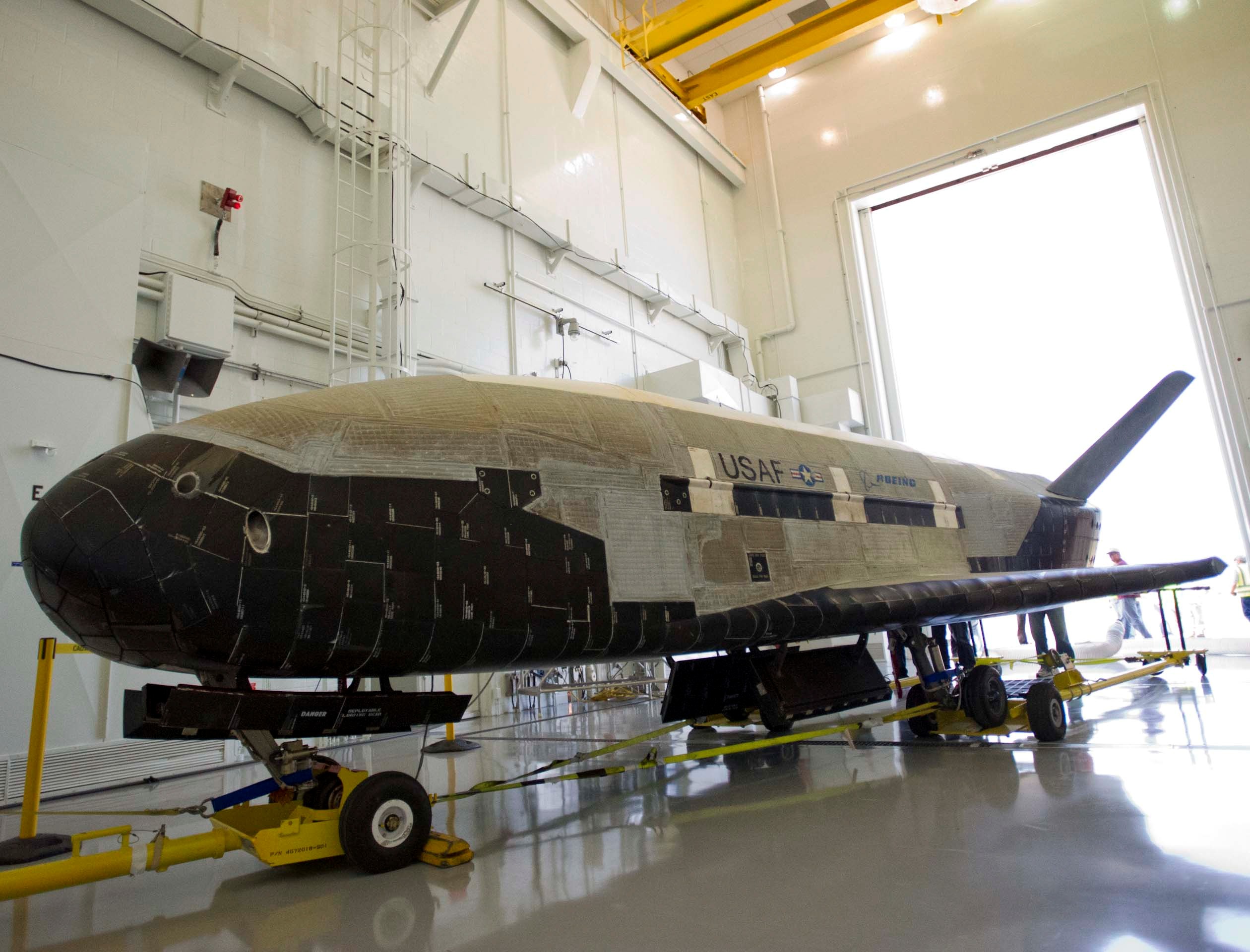The unmanned Boeing X-37B reusable spacecraft is described as an Orbital Test Vehicle or OTV. It is remotely piloted from the ground. Boeing has built and flown two X-37Bs—OTV-1 and OTV-2.
OTV-1 was flown first on April 22, 2010 until December 3, 2010 during mission USA-212—224 days. The first flight demonstrated that the X-37B is able to conduct long-duration operations and enabled scientists to understand the long-term effects on system components such as the structure and future payloads. The successful first flight included achieving orbit, de-orbiting, and safely landing at the primary return location at Vandenberg Air Force Base, California.
Designated USA-226, the second USAF X-37B mission was launched atop an Atlas V from Cape Canaveral Air Force Station, Florida on March 5, 2011. OTV-2 returned for a safe landing at Vandenberg AFB on June 16, 2012—469 days later, or 245 days longer than the flight of OTV-1.
The X-37B OTVs measure 29 feet, 3 inches in length, 9 feet, 6 inches high, with a wingspan of 14 feet, 11 inches; launch weight is 11,000 pounds. Each vehicle has an experiment bay that measures 7 feet long by 4 feet wide. Their low-Earth orbital range is 110 to 500 miles above Earth. It is powered by a single Rocketdyne hydrazine-fueled 3,300-pound thrust AR2-3 rocket engine. It is powered by Gallium arsenide solar cells with lithium-ion batteries.
The Boeing-USAF X-37B is the first spacecraft to land on Earth on a regular basis without a pilot on board. OTV-1 is being readied for its second mission as I write. The only other spacecraft to land on Earth without a pilot on board was the short-lived Russian space shuttle prototype—the Buran in 1988. —Steve Pace

















1 Comment
Comments are closed.